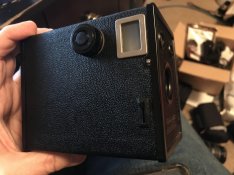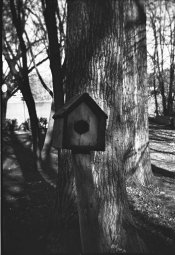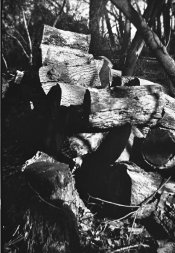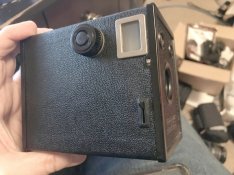A couple of questions though, you say shutter is 1/45th, and f13 to f18 for aperture. I How confident are you about those numbers, because I keep seeing 1/30-1/60 with everyone taking a different stance, and across the board, I've seen this camera stated as f11. I've never really done prints even for digital photos, so is it normal to get the 6x9 negatives printed out at 2x3? I hit up a local Walgreens and tried to ask some questions about printing this stuff, but the guy behind the counter was just as clueless about this stuff as I currently am.
Each individual shutter will have its own speed; I just picked those as reasonably possible examples. If you have a reasonably modern smart phone, you can take a slo-mo video of the shutter motion and count the frames that show the shutter open to get a better figure (70 frames per second, which my Pixel will do in slo-mo, makes each frame about 14 milliseconds, but different model phones will have different frame rates available). Typical speeds for a rotary shutter (the kind found in most box cameras) will run from 1/25 to 1/200 (got one that fast in my FPP Debonair), and apertures range from an optimistic f/11 to f/18 or so (those that have two aperture choices will generally have one stop difference). With the lens behind the shutter, you can pretty readily measure the actual aperture, measure the focal length, and calculate the f ratio.
If you don't want to do all that measuring and calculating, it's generally safe to load ISO 100 film for bright conditions, and ISO 400 for dull (cloudy) conditions. Even ISO 400 won't do indoors without flash in a box camera, though, unless you use long exposure.
These cameras were generally built for what was then ASA 50-64 (after the ASA jump of 1960, they'd be modern ISO 100-125), so f/11 at 1/50 is the standard "Sunny f/11" exposure (because most people think "Hazy" is actually "Sunny"), but f/13 or f/16 at 1/40 or 1/25 wasn't uncommon.
And yes, my experience is even the simplest will do fine with color, as long as the print size is kept small. Enlarge too much, you'll see color fringes (especially near the corners) due to chromatic aberration, but at 2x3 print size or corresponding size on a screen, they aren't very noticeable.
And now here are some reasons not to take you film to WalMart: you'll never see your negatives (or your 620 spool, if that's what you camera uses) again, they may not accept 120/620 at all anyway, and if they do, their lab may do a poor job dealing with the potentially uneven frame spacing that can come with red window framing. Not to mention their scans suck...










